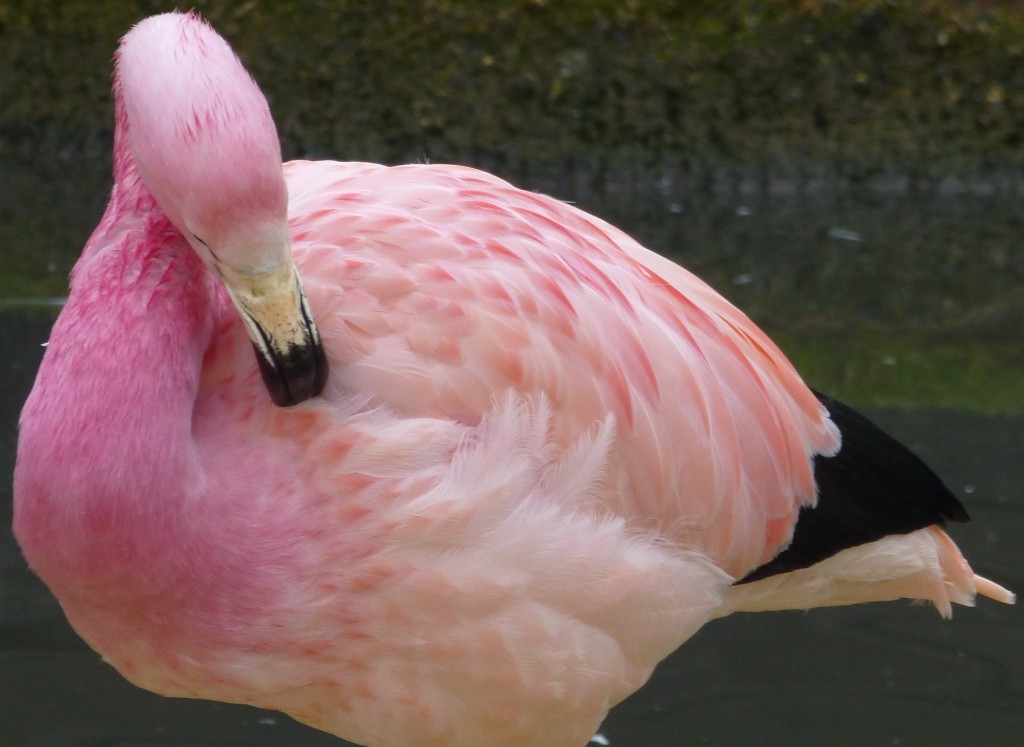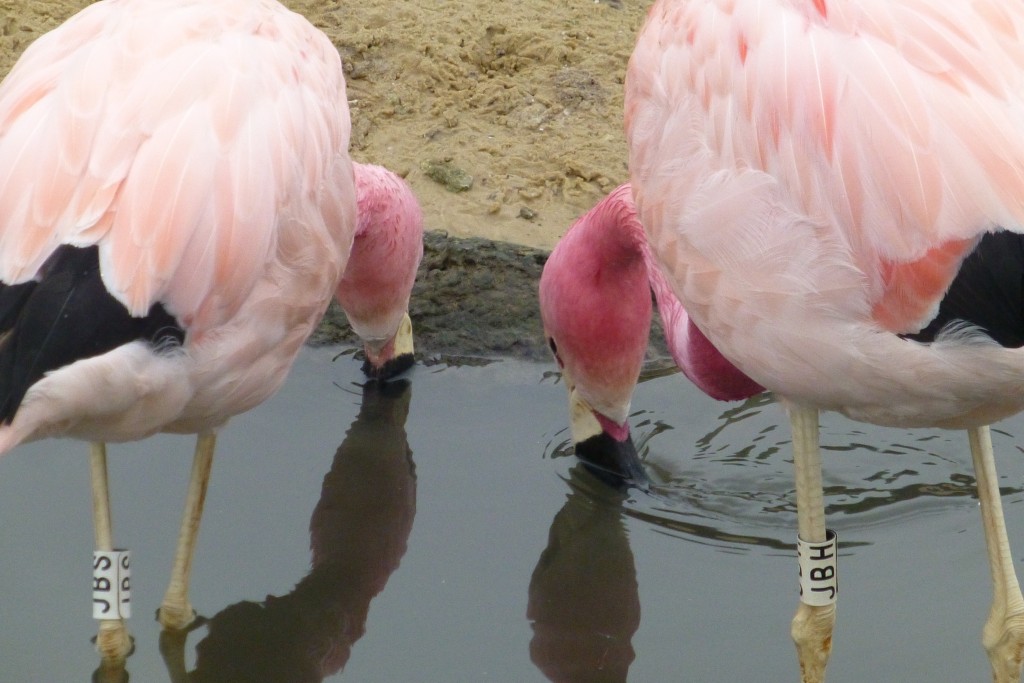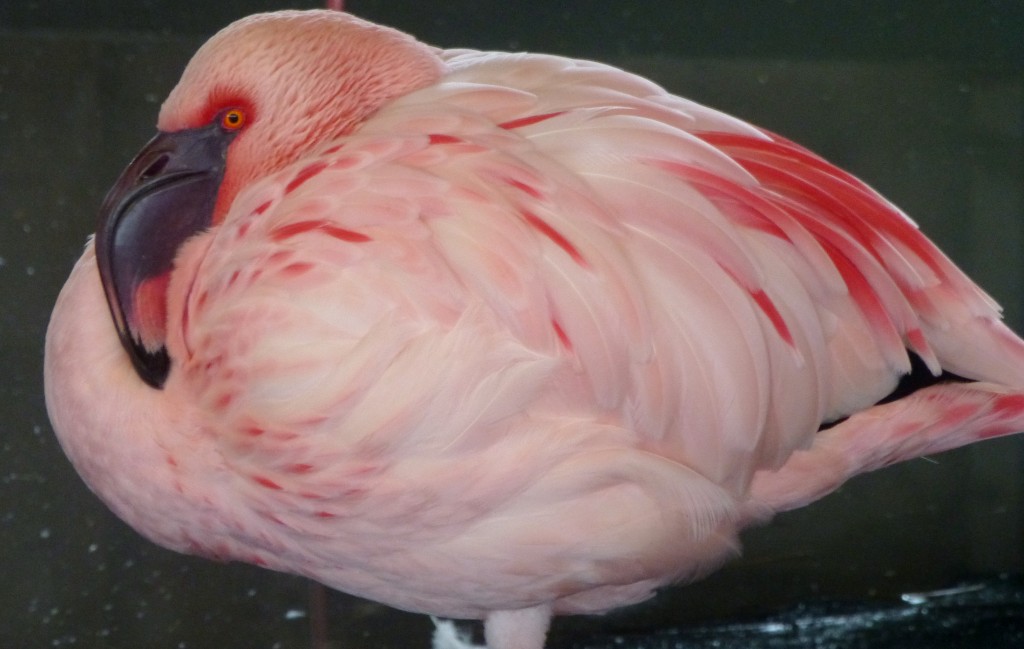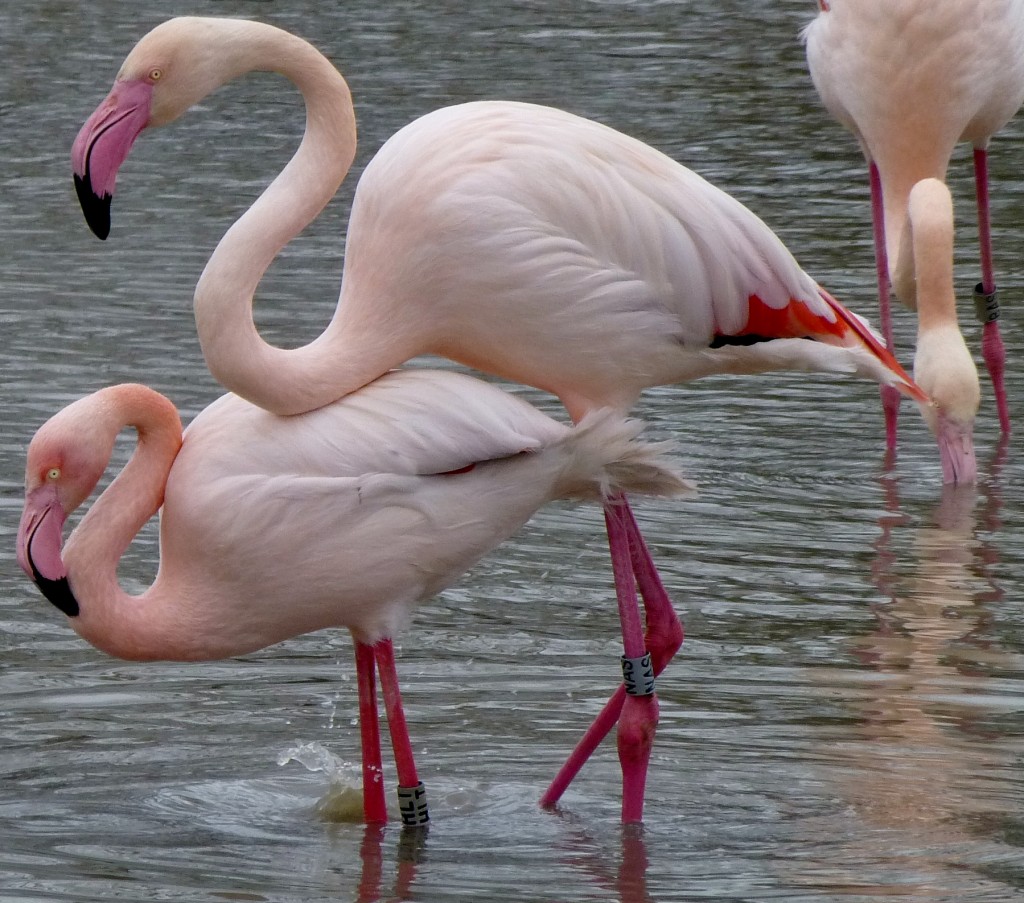In the pink! And very bright (part 1)
Hello flamingo followers, a quick February update. If you haven't been down to Slimbridge recently to see the flamingos then you're missing out on a sea of bright pink plumage. In some of the more colourful species (i.e. those that are not just one shade of pink), there is a really noticeable colour change as birds begin to spruce up for spring. This is especially noticeable in the Andean and lesser flamingos, who carry more than one hue when they come into breeding (courtship) condition.

Even though the pair bonds in the Andean flock seem to stay all year around (in some form or another), it is obvious that they get more pronounced from now on and over the summer. As it's coming up to Valentine's Day here's a nice photo of a long-standing pair (JBH, boy, and JBS, girl) foraging together.

It's not just the feathers of the flamingos that change colour at this time of year. It's their beaks, legs and feet too. Normally, becoming a more bright and vibrant pink. If you closely at the heads of the greater and lesser flock at present, you'll see this really well.

Even in the greater flamingos, which are naturally paler, you can see a more vivid coral pink legs and beak. The pair below (NAS, a HUGE male bird, and HLT, an experienced breeding female) show this colour change really well. So if you're trying to spot who is in top condition, don't just focus on feathers. Stare at beaks too!

More on weird and wonderful romantic, reproductive flamingo behaviours later in the week!



